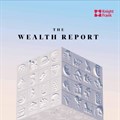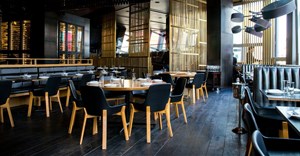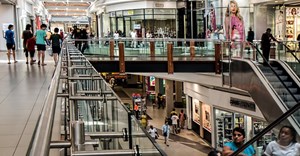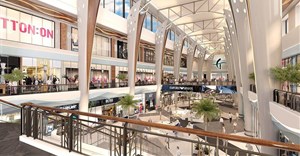Trending




 Sabre EMEA 2024 Awards: Razor PR, Retroviral top SA agenciesDanette Breitenbach
Sabre EMEA 2024 Awards: Razor PR, Retroviral top SA agenciesDanette Breitenbach
Elections 2024
Jobs
- Content Writer, Commerce and Reviews Roodepoort
Have hyper retail centres 'hit the spot'? Themes through lockdown and beyond

We highlight some key spending themes emanating from the data through 2020:
Theme 1: Smaller economic regions may well have done better retail- and consumer-wise in 2020.
In the early stages of “hard” lockdown, around April, it had already become apparent to us that South Africa’s major city regions’ economies, and thus their retail centres too, would likely be more severely impacted by the lockdowns. With the agriculture sector being largely declared an essential sector, more rural agriculture-dominated economies were arguably less shut down. This meant that employment and household incomes in those regions may have been less impacted, which in turn would likely lead to better consumer spend growth, or less decline at least, in more rural regions’ retail centres than in the major metro regions. And indeed, the total FNB card spend in retail centres per province shows the “smaller five” provincial regions all showing some mild positive growth, North West Province showing the highest 2020 growth of 5.8%, followed by Northern Cape (5.5%). At the weakest end of the spectrum we had the Western Cape with a -2.2% decline, and KZN with -1.3%, while the “Big One”, Gauteng, recorded zero change in 2020 compared with 2019.
Theme 2: Work (and study) from home didn’t only have major implications for the office market. Retail was significantly impacted as well.
The fact that food and groceries are essential spending items, along with healthcare and pharmaceuticals, and the fact that there were far more limited lockdown regulations that applied to these, made it fairly obvious that their spend/sales would not dip as badly as retail categories that were locked down more severely. However, it didn’t initially occur to us that home-related spend (hardware, along with furniture and appliances) would surge as it did just following the hard lockdowns, a function of the home becoming a far more important place for many, given that they worked from there and often educated children from there too.
This surge quickly became apparent as lockdown regulations eased towards mid-2020 though, and as at January 2021, FNB card spend data still showed the top performing major category to be “hardware and furnishing” at 124% of the pre-lockdown January 2020 level.
Theme 3: Lockdowns and forced work from home have contributed in part to saving on fuel bills too.
During hard lockdown, fuel sales plummeted as work and leisure travel dropped sharply. The travel situation has been slowly normalising, as have oil and petrol prices (rising). But FNB card spend on fuel and tolls for January 2021 was still only 84% of the level at January 2020.
Theme 4: Lockdown likely cemented some increased online spending habits on a more permanent basis
Although still relatively small, as lockdown regulations eased to allow for increased online retail, FNB card spend data did see a growth surge in e-commerce, excluding tourism spend. From a year-on-year growth rate of 35.6% year-on-year as at March 2020, the May surge in e-commerce spend took its growth to 123.5%. While tapering somewhat thereafter, this growth remained at a very strong 66.6% as at February 2021.
Theme 5: A dismal period for restaurants, entertainment and leisure
The plight of the restaurant and entertainment sector, along with tourism and leisure, is well documented. These parts of the economy not only still have significant social distancing requirements to contend with, but also have to deal with being a lower consumer spending priority in times of recession and financial pressure, being largely non-essential in nature. FNB card spend data thus saw the dining out and entertainment spend category for January 2021 at only 82% of the January 2020 level, while tourism spend was at a mere 50% of the January 2020 level.
What then were the implications of the lockdown and the key spending themes for the various categories of centres, would it appear?
FNB card spend data per centre points towards centres more dominated by essential spending items, notably the grocery shopping category, as having fared better sales-wise, as one would have expected.
This implies that the larger super-regional and regional malls, whose weighting of grocery retail shopping in their sales mix was far less than the small-sized neighbourhood and convenience centres, would fare worse from a sales point of view. And indeed, this appears to be the case. FNB card spend in convenience centres grew positively by 6.7% in 2020 and that of neighbourhood centres by 6.1%. At the other end, super regional mall spend declined by –10.4% and regional malls by -5.9%.
Whereas large super regionals, for example, had only 27.1% of their card spend being on food and groceries, and a large 23.4% on the poorly performing clothing and apparel category, the small-sized neighbourhood centre category had a massive 58.2% spent on food and groceries, and a far lesser 4.3% spent on clothing and apparel.
However, the performance differential between “small” and “large” centres was more than just about the differing weightings of retail categories. The large super regional and regional centres appeared to lose their appeal, even for basic essentials. Just zooming in on card spend on the food and grocery category, we saw a 2020 decline of -9.2% in the super regional mall category, while neighbourhood centres saw positive growth of +9.7% in this category. In fact, neighbourhood centres even saw positive growth in card spend on clothing and apparel to the tune of +14.4%, while super regionals suffered a decline in this their “strong point” to the tune of –6.7%.
Larger malls suffered more due to lockdown
The large malls thus appear to have suffered more significantly at the hands of lockdown than the small centres from a sales point of view. This is perhaps not too surprising, given that the trip to a large mall is perhaps more of an “outing” and an “experience” than solely about quick essential shopping. Given that much of the “experience” part of the mall has been restricted, i.e., restaurants and entertainment, the reasons to go there are less, and so the more essential shopping that gets done along the way also suffers. Convenience and neighbourhood centres have thus become “king”… or have they? Perhaps not quite.
The centre category whose sales growth appears to have outstripped all of the rest is that of hyper centres. This category appears to have been best positioned, if FNB card spend is a reflective sample of overall spend. Seen as being “affordable” places to shop in tough financial times, with big selection in their key focus areas, and not overly focused on entertainment. With a huge weighting of 81.9%, food and groceries spend, and a DIY and hardware component added on, this centre category experienced card spend growth of +14.2% in 2020. This included growth of +14.2% in grocery spend, 23.4% in DIY and hardware, 25.8% in clothing and apparel, and 17.4% in home and furniture spend.
Hyper centres thus appear to have “hit the spot”, relatively speaking, during the tough recessionary lockdown year.
Outlook
Looking forward into 2021, the prospects for retail centres as a whole appear to be looking up. From the first quarter 2021 FNB Property Broker Survey, the broker sample has perceived an increase in retail property market activity for the past three consecutive quarters and perceives the retail property market’s strength to be in between the strongest industrial property category and the now weakest office property category.
They still see the retail property as significantly oversupplied, but in the past two quarterly surveys have pointed to a slowdown in the rising vacancy rate trend in this sector.
Steady improvement in retail property tenants
TPN commercial tenant data points to a steady improvement in retail property tenants in good standing with their landlords regarding rental payments, from a very weak 40% of tenants back in May 2020 to 61% by December 2020. This remains a weak level, however, so the sector is not there yet.
We don’t see GDP (gross domestic product) levels getting back to pre-Covid 2019 levels until around 2023, so household disposable income growth is likely to remain under pressure. In addition, we believe that low consumer confidence is shifting consumers in the direction of greater financial caution, translating into a rise in the savings rate to come.
So, the focus of consumers is likely to remain strongly on essential spend, with leisure and entertainment spend, relatively speaking, on the backburner. Another year of outperformance in those centres, focusing to a greater degree on the big essentials, and on affordability, is thus seen as likely.
















